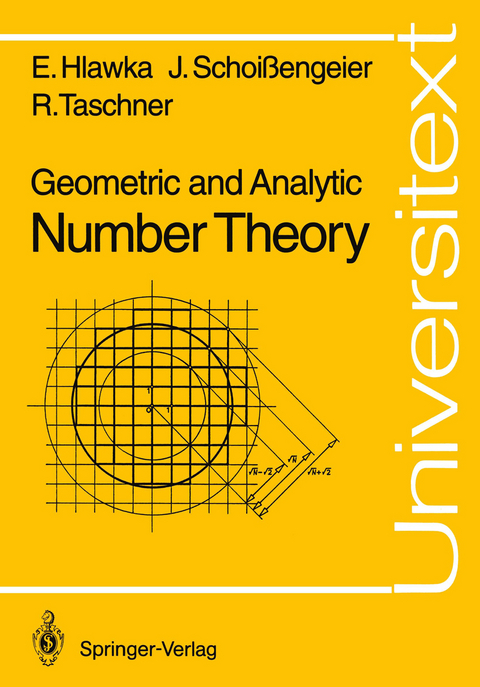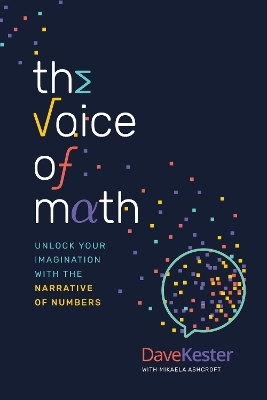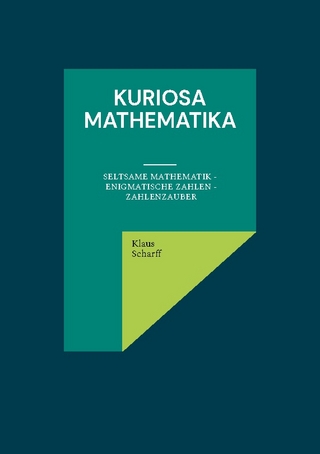
Geometric and Analytic Number Theory
Springer Berlin (Verlag)
978-3-540-52016-0 (ISBN)
Univ.-Prof. Dr. Rudolf Taschner, geboren 1953 in Ternitz, studierte an der Universität Wien Mathematik und Physik. 1977 begann er seine Arbeit an der Technischen Universität Wien, an der er nach einem Zwischenaufenthalt in Stanford bis heute als Professor tätig ist. Rudolf Taschner gründete und betreibt zusammen mit seiner Frau und Kollegen der TU Wien "math.space", einen Veranstaltungsort im Wiener MuseumsQuartier, der Mathematik als kulturelle Errungenschaft präsentiert und sowohl in Österreich als auch international größte Anerkennung als höchst innovative Einrichtung gefunden hat. 2004 wurde Rudolf Taschner zum "Wissenschaftler des Jahres" gewählt. Sein Bestseller "Zahl Zeit Zufall. Alles Erfindung" erhielt zahlreiche Auszeichnungen, sein im Herbst 2009 erschienenes Werk "Rechnen mit Gott und der Welt" wurde zum Buchliebling 2010 gewählt. 2011 erhielt er den Preis der Stadt Wien für Volksbildung.
1. The Dirichlet Approximation Theorem.- Dirichlet approximation theorem - Elementary number theory - Pell equation - Cantor series - Irrationality of ?(2) and ?(3) - multidimensional diophantine approximation - Siegel's lemma - Exercises on Chapter 1..- 2. The Kronecker Approximation Theorem.- Reduction modulo 1 - Comments on Kronecker's theorem - Linearly independent numbers - Estermann's proof - Uniform Distribution modulo 1 - Weyl's criterion - Fundamental equation of van der Corput - Main theorem of uniform distribution theory - Exercises on Chapter 2..- 3. Geometry of Numbers.- Lattices - Lattice constants - Figure lattices - Fundamental region - Minkowski's lattice point theorem - Minkowski's linear form theorem - Product theorem for homogeneous linear forms - Applications to diophantine approximation - Lagrange's theorem - the lattice?(i) - Sums of two squares - Blichfeldt's theorem - Minkowski's and Hlawka's theorem - Rogers' proof - Exercises on Chapter 3..- 4. Number Theoretic Functions.- Landau symbols - Estimates of number theoretic functions - Abel transformation - Euler's sum formula - Dirichlet divisor problem - Gauss circle problem - Square-free and k-free numbers - Vinogradov's lemma - Formal Dirichlet series - Mangoldt's function - Convergence of Dirichlet series - Convergence abscissa - Analytic continuation of the zeta- function - Landau's theorem - Exercises on Chapter 4..- 5. The Prime Number Theorem.- Elementary estimates - Chebyshev's theorem - Mertens' theorem - Euler's proof of the infinity of prime numbers - Tauberian theorem of Ingham and Newman - Simplified version of the Wiener-Ikehara theorem -Mertens' trick - Prime number theorem - The ?-function for number theory in ?(i) - Hecke's prime number theorem for ?(i) - Exercises on Chapter 5..- 6. Characters of Groups of Residues.- Structure of finite abelian groups - The character group - Dirichlet characters - Dirichlet L-series - Prime number theorem for arithmetic progressions - Gauss sums - Primitive characters - Theorem of Pólya and Vinogradov - Number of power residues - Estimate of the smallest primitive root - Quadratic reciprocity theorem - Quadratic Gauss sums - Sign of a Gauss sum - Exercises on Chapter 6..- 7. The Algorithm of Lenstra, Lenstra and Lovász.- Addenda.- Solutions for the Exercises.- Index of Names.- Index of Terms.
| Erscheint lt. Verlag | 2.8.1991 |
|---|---|
| Reihe/Serie | Universitext |
| Übersetzer | Charles Thomas |
| Zusatzinfo | X, 238 p. |
| Verlagsort | Berlin |
| Sprache | englisch |
| Maße | 170 x 242 mm |
| Gewicht | 430 g |
| Themenwelt | Mathematik / Informatik ► Mathematik ► Arithmetik / Zahlentheorie |
| Mathematik / Informatik ► Mathematik ► Wahrscheinlichkeit / Kombinatorik | |
| Schlagworte | Diophantine approximation • Diophantische Approximation • distribution of prime numbers • Geometrie der Zahlen • geometry of numbers • Number Theory • Prime • Prime number • Primzahlverteilung • Zahlentheorie |
| ISBN-10 | 3-540-52016-3 / 3540520163 |
| ISBN-13 | 978-3-540-52016-0 / 9783540520160 |
| Zustand | Neuware |
| Haben Sie eine Frage zum Produkt? |
aus dem Bereich


